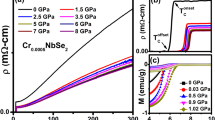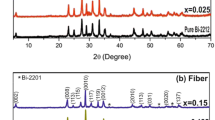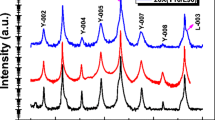Abstract
We have discovered fish-tail phenomenon / peak effect in a (Hg,Pb)(Ba,Sr) 2 Ca 2 Cu 3 O 8+δ [(Hg,Pb)(Ba,Sr)-1223] single crystal. Microscopic analyses and observations were performed to elucidate the origin of peak effect in terms of the micro-structure of the (Hg,Pb)(Ba,Sr)-1223 single crystal. In a [001] ED pattern of the crystal, streaks were observed along <110> at each spot. Distortions were seen along <110> in HRTE-micrograph of the (001) plane, and a compositional modulation was clearly detected with respect to the Hg/Pb ratio along [110] with an average periodicity of ∼18 nm. Such a spinodal-wave-like inhomogeneity in the local composition may yield mesoscopically distributed weak pinning centers which is most likely responsible for the appearance of peak effect.
Similar content being viewed by others
Author information
Authors and Affiliations
Rights and permissions
About this article
Cite this article
Akao, T., Lee, S.R., Suematsu, H. et al. Peak Effect Caused by Compositional Modulation in Superconducting (Hg,Pb)(Ba,Sr)-1223 Single Crystal. Journal of Low Temperature Physics 117, 933–937 (1999). https://doi.org/10.1023/A:1022563226776
Issue Date:
DOI: https://doi.org/10.1023/A:1022563226776




